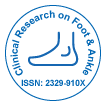Наша группа организует более 3000 глобальных конференций Ежегодные мероприятия в США, Европе и США. Азия при поддержке еще 1000 научных обществ и публикует более 700 Открытого доступа Журналы, в которых представлены более 50 000 выдающихся деятелей, авторитетных учёных, входящих в редколлегии.
Журналы открытого доступа набирают больше читателей и цитируемости
700 журналов и 15 000 000 читателей Каждый журнал получает более 25 000 читателей
Индексировано в
- Google Scholar
- Шерпа Ромео
- Открыть J-ворота
- Академические ключи
- РефСик
- Университет Хамдарда
- ЭБСКО, Аризона
- OCLC- WorldCat
- Публикации
- Женевский фонд медицинского образования и исследований
- Евро Паб
- ICMJE
Полезные ссылки
Журналы открытого доступа
Поделиться этой страницей
Абстрактный
Posterior versus Lateral Plate Fixation of Short Oblique Fractures of the Distal Fibula: A Literature Review
Julia S Sanders, Ryan R Fader, Justin J Mitchell
Background: Oblique spiral fractures of the distal third of the fibula are commonly encountered in any orthopedic practice. Controversy persists over various fixation methods and their corresponding risks and benefits.
Methods: A systematic review of the pertinent literature pertaining to these fractures was performed, and currently published results were summarized.
Results: There are advantages and disadvantages to each fixation method. Supporters of direct lateral plating argue for less peroneal irritation, ease of exposure, and direct fracture reduction. Those in favor of posterior plating report increased biomechanical strength, less lateral skin irritation, infrequent need for hardware removal, and ability to use bicortical fixation in the distal fragment. Modern implant advances and minimally invasive approaches have added complexity to fixation choices.
Conclusion: Presently there is insufficient evidence to support either posterior or lateral fibular plating as a gold standard. Choice of approach and surgical technique should be individually based on fracture pattern, patient characteristics and surgeon experience.
Журналы по темам
- Биохимия
- Ветеринары
- Генетика и молекулярная биология
- Геология и науки о Земле
- Еда и питание
- Иммунология и микробиология
- Инженерное дело
- Клинические науки
- Материаловедение
- медицинские науки
- Науки об окружающей среде
- Общая наука
- Сельское хозяйство и аквакультура
- Социальные и политические науки
- Уход и здравоохранение
- Фармацевтические науки
- Физика
- Химия

 English
English  Spanish
Spanish  Chinese
Chinese  German
German  French
French  Japanese
Japanese  Portuguese
Portuguese  Hindi
Hindi